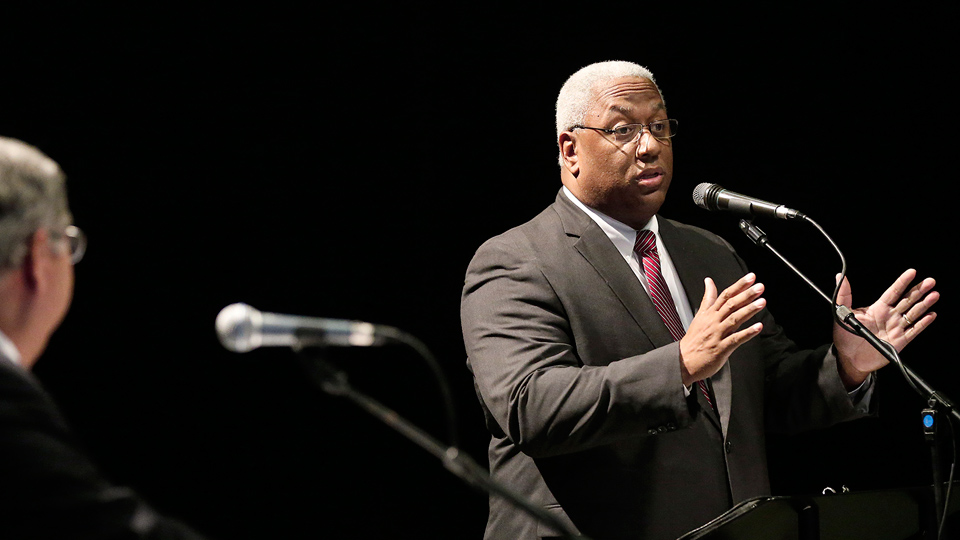
RICHMOND, Va. – The state of Virginia, which used to be a bastion of segregation and has been the long-time headquarters of the National Right-to-Work Committee, was one of the brighter spots for worker advocates and progressives November 8 – at least, one of the less dim ones.
Organized labor defeated Proposition One, which would have embedded Virginia’s existing “Right to Work” law in the state constitution, making it very hard to repeal in the future.
Early reports from the field suggested that voters were confused by the deceptive language of the proposition, and thought it might mean that they would have a better chance at getting jobs.
However, campaigning by unions and progressive organizations defeated the measure, 53.60 percent to 46.40. “Right to work” is still Virginia law, but now it can be repealed by a simple majority vote of both houses in the legislature.
Gina Maglionico, Communications Director of the Virginia AFL-CIO, which pushed a “no’ vote, was quoted by the Martinsville Bulletin newspaper as saying that “a constitution is meant to protect the rights of citizens, not stifle them”, and the voters agreed.
Virginia went into the election with three Democratic and eight Republican members of the House of Representatives (neither of the state’s two Senate seats was up for re-election). The state emerged with four Democratic and seven Republican House members.
Democrats picked up one House seat, in the newly redistricted (by federal court order) 4th District, where Democratic State Senator Donald McEachin defeated his Republican rival, Mike Wade, by 56.97 percent to 42.80 percent.
Clinton’s victory
Hillary Clinton won the state and its thirteen electoral votes. However, her margin over Republican Donald Trump was less than the seven point spread that some had been predicting. Clinton won 49.47 percent of the vote (or a total of 1,911,677 votes), to 44.70 percent (1,727,428 votes) for Donald Trump.
In Virginia’s eleven congressional districts, Clinton did well in urban areas and in areas with high African American and Latino concentrations. In the 3rd Congressional District, for example, Clinton got close to double Trump’s vote, 62.69 percent to 32.27 percent. In the newly redrawn 4th Congressional District, Clinton beat Trump 57.78 percent to 37.52 percent.
Clinton did best of all in the congressional districts that include the suburbs of Washington, D.C. In the 8th, she beat Trump 72.44 percent to 20.61 percent; in the 10th, 51.59 percent to 41.60. And in the 11th Congressional District, Clinton beat Clinton beat Trump by 65.81 percent to 27.31 percent.
However, in rural districts the outcomes were very different. In the 6th Congressional District, which includes some distressed mountain areas, Trump beat Clinton 59.61 percent to 34.42 percent. In the mostly rural 7th District, he beat her 50.28 percent to 43.80 percent. And in the 9th District in far southwestern Virginia, the most distressed part of the coal country, Trump beat Clinton by 68.45 percent to 27.18 percent.
The percentage of votes for the Green and the Libertarian parties were negligible. The Libertarians got three percent, the Green Party 7 percent. Independent candidate Evan McMullin won 1.37 percent of the vote.
For a map of Virginia’s congressional districts, click here.
New Democratic seat
After President Obama’s victory in 2008, the number of Democratic congresspersons had jumped to six, but it was halved in the midterm elections of 2010. This year, optimists in the Democratic Party camp thought it might be possible for their party to go back to six seats in the House, but the results fell short.
All three Democratic incumbents – Bobby Scott in the 3rd District, Don Breyer in the 8th and Gerry Connolly in the 11th were re-elected by lopsided margins.
There had been some hope that the Democratic candidates might win in the 5th and 10th districts. But in the 5th, Republican Tom Garrett beat Democrat Jane Dittmar by 58.20 percent to 41.59 percent, in a race that included threats against Dittmar’s campaign office.
In the 10th District, incumbent Republican congresswoman Barbara Comstock hung onto her seat, beating her Democratic challenger, LuAnn Bennett, by 52.69 to 46.97 percent. To achieve this victory, Comstock had to put distance, in the voters’ eyes, between herself and Donald Trump.
However, Democrat Donald McEachin defeated his Republican rival, Mike Wade in the 4th District.
Next year
Approximately 68 percent of registered voters cast ballots in this election. State turnout in 2012’s presidential election was 71.78 percent. It was 74.5 percent in 2008, 71.4 percent in 2004, and 68.5 percent in 2000.
Next year there will be state elections throughout Virginia. All 100 seats in the House of Delegates will be on the line, as will the offices of governor, lieutenant governor and attorney general. Elections for State Senate will take place in 2019).
In recent state legislative elections, the Republicans have gained a stranglehold in the General Assembly by means of a combination of creative gerrymandering and vote suppression. This has given the Republicans a 66 to 34 seat majority, and the capacity to block all progressive legislation. But currently, all three executive officers are Democrats.
So the stage is set for another titanic battle, in which a key factor will be turnout of Democratic voters. A wide variety of organizations, including unions, New Virginia Majority and the “Our Revolution” organization that grew out of the Bernie Sanders presidential campaign, will be working hard to ensure high voter turnout.










